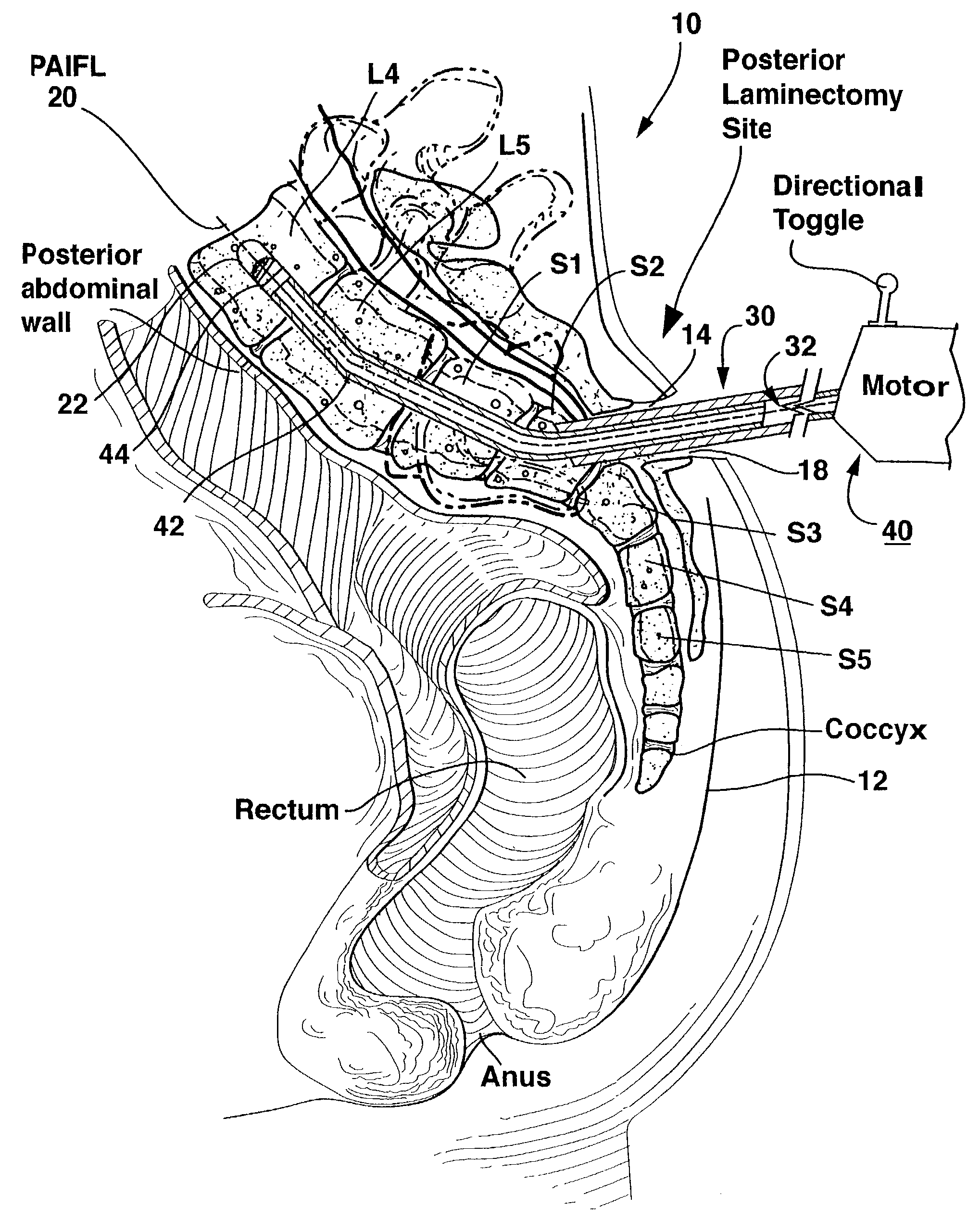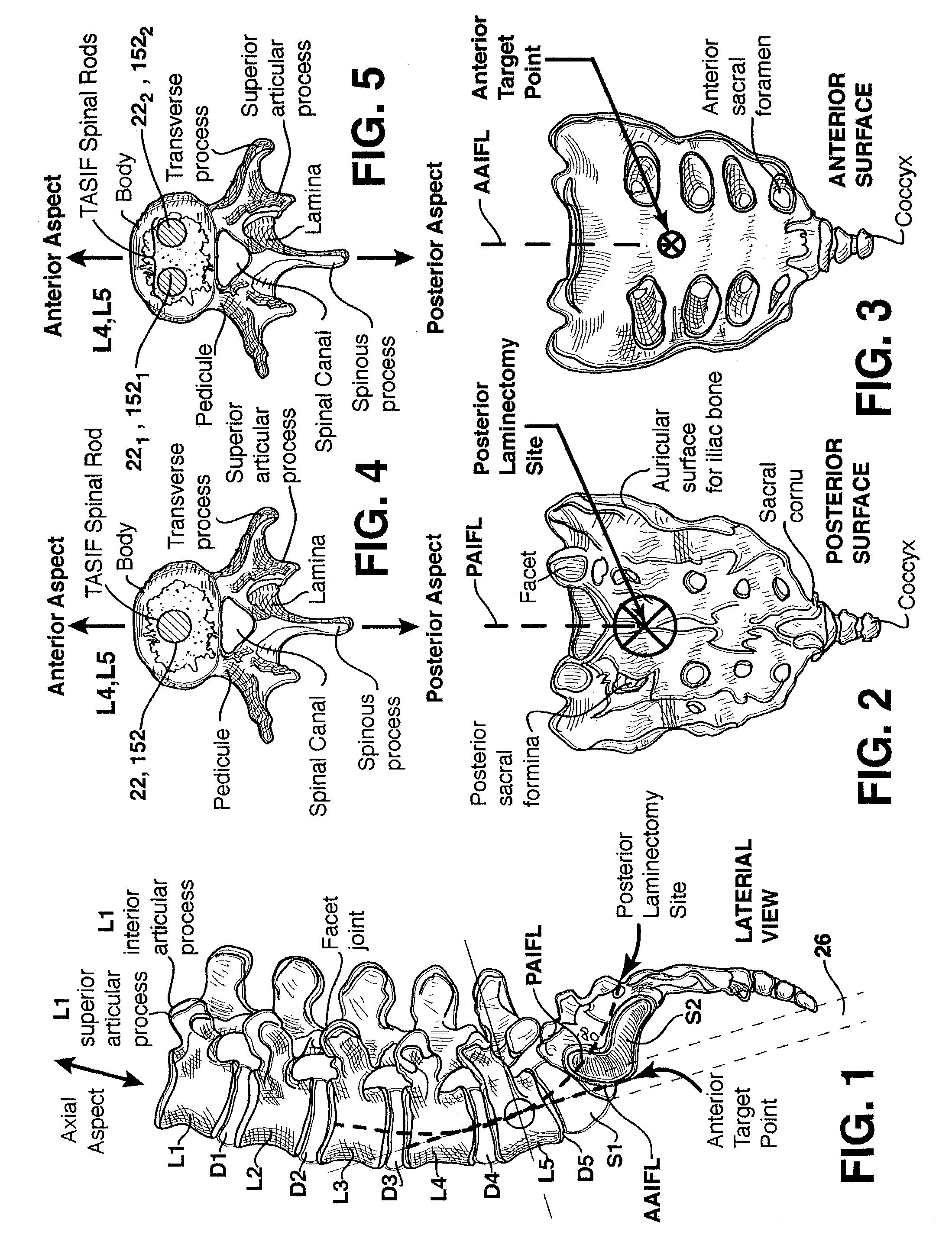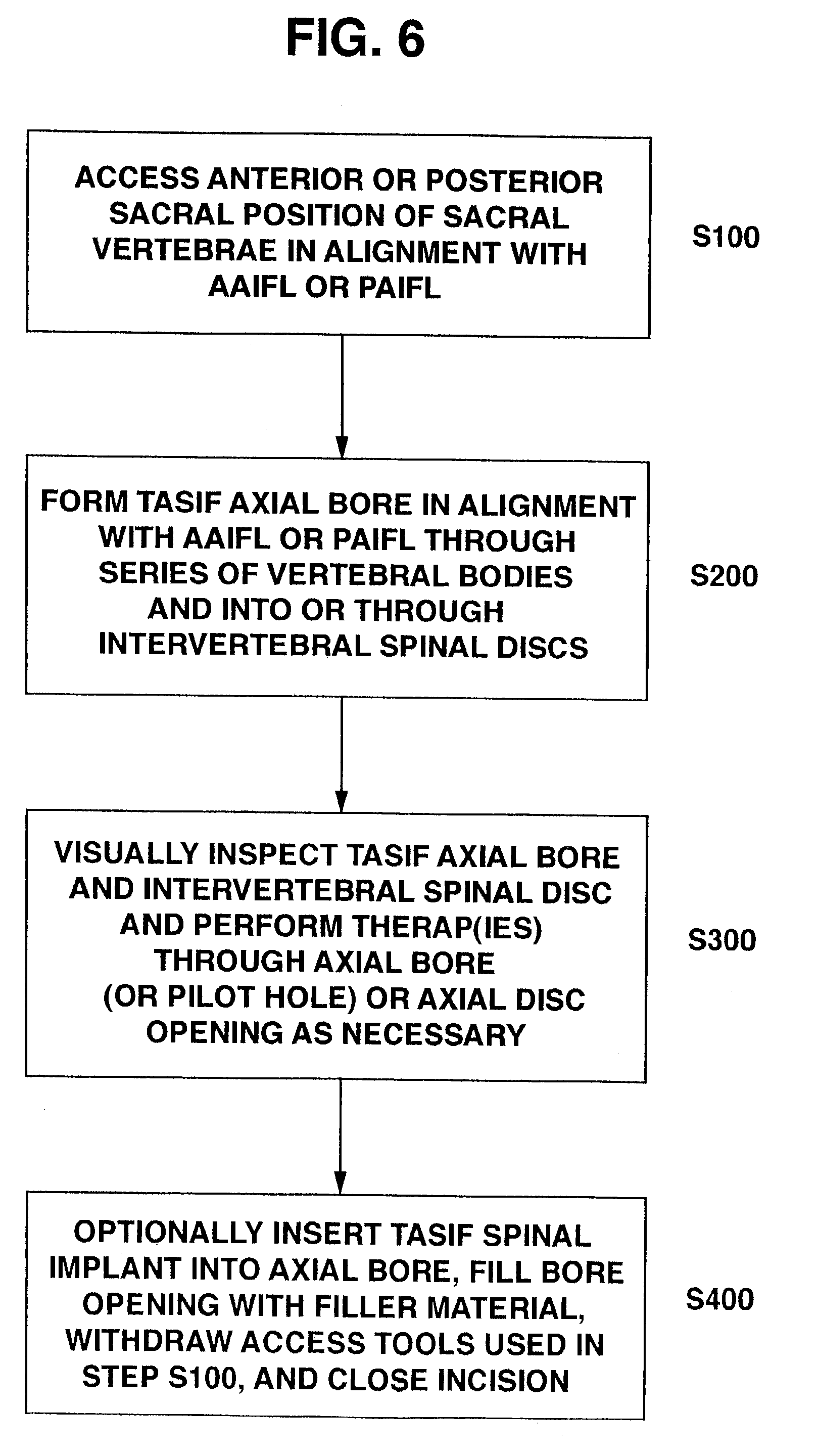Method and apparatus for providing posterior or anterior trans-sacral access to spinal vertebrae
a transsacral and spinal vertebrae technology, applied in the direction of prosthesis, surgical forceps, therapy, etc., can solve the problems of high failure rate of fusion procedure, neurologic deficit in nerve function, extreme pain, etc., to reduce discomfort for patients, minimally invasive
- Summary
- Abstract
- Description
- Claims
- Application Information
AI Technical Summary
Benefits of technology
Problems solved by technology
Method used
Image
Examples
first embodiment
[0113]In use of the first embodiment, the enlarged diameter anterior tract sheath 96 is advanced through the presacral space 24 over the inflated balloon 90 or the dilator(s) 340, 350, and the beveled distal end 97 is aligned with the typical angle of the anterior surface of the sacrum at the anterior target point as shown in FIG. 28. The anterior tract sheath 96 is thereby axially aligned with the AAIFL, and the anterior tract sheath lumen 98 forms the anterior tract 26 shown in FIG. 1.
second embodiment
[0114]In use of the second embodiment, the anterior tract sheath 196 is advanced through the presacral space 24 over the inflated balloon 90 or the dilator(s) 340, 350 as shown in FIG. 30, and the threaded tip distal end 197 is screwed into the sacral bone at the anterior target point as shown in FIG. 31. The anterior tract sheath 196 is thereby axially aligned with the AAIFL, and the anterior tract sheath lumen 198 forms the anterior tract 26 shown in FIG. 1.
[0115]The balloon 90 is then deflated, and the balloon catheter 84 and the guidewire 80 are withdrawn from tract sheath lumen 98, 198. Alternatively, the dilator(s) 340, 350 and the guidewire 80 are withdrawn from tract sheath lumen 98. The anterior tract 26 of the anterior tract sheath 96, 196 is employed in the steps of FIG. 6 in forming the anterior TASIF axial bore (step S200), the performance of the optional discectomy or disc augmentation (step S300), and in the implantation of the TASIF spinal implant in each such bore (...
PUM
| Property | Measurement | Unit |
|---|---|---|
| Diameter | aaaaa | aaaaa |
Abstract
Description
Claims
Application Information
 Login to View More
Login to View More - R&D
- Intellectual Property
- Life Sciences
- Materials
- Tech Scout
- Unparalleled Data Quality
- Higher Quality Content
- 60% Fewer Hallucinations
Browse by: Latest US Patents, China's latest patents, Technical Efficacy Thesaurus, Application Domain, Technology Topic, Popular Technical Reports.
© 2025 PatSnap. All rights reserved.Legal|Privacy policy|Modern Slavery Act Transparency Statement|Sitemap|About US| Contact US: help@patsnap.com



